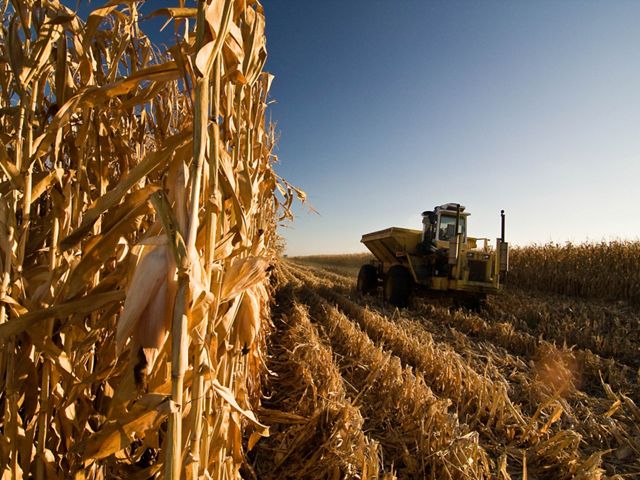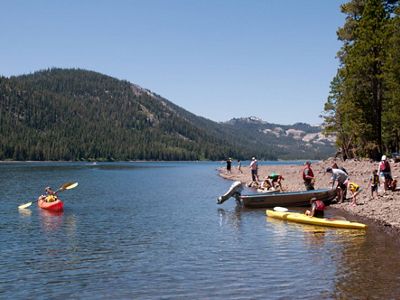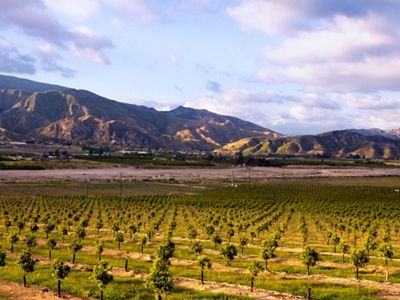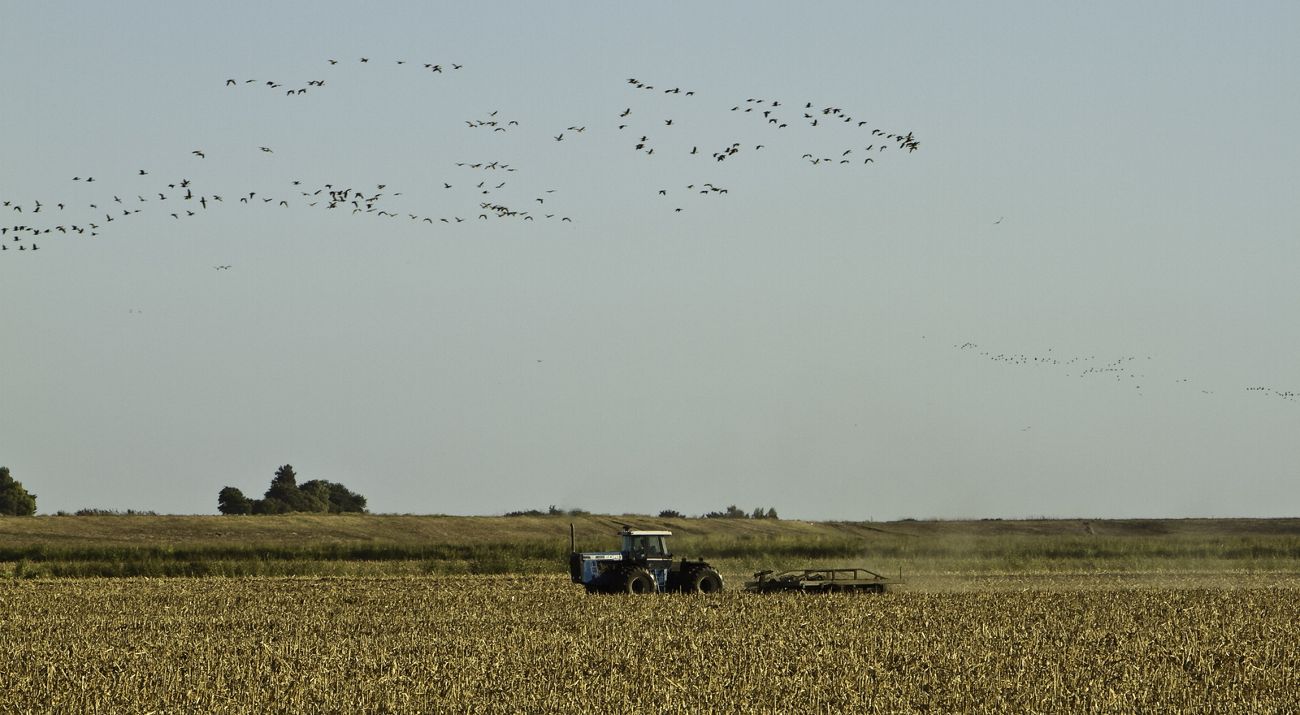It’s Not Us Versus Them. It’s Just Us.
TNC’s conservation philosophy for land and water protection in California.
The Nature Conservancy started with a land deal. In 1953, a group of neighbors came together to save a small but special corner of New York State—an old-growth hemlock forest along the Mianus River that was threatened by an impending dam. Those concerned citizens were scientists and local residents, people who felt deeply that it was important to take the long view to protect nature. Those people became The Nature Conservancy.
Over the past 60 years, the world has changed dramatically, as have the environmental issues. We’ve grown from a small land trust to the largest conservation organization in the world. Yet, our mission and the spirit of our organization hasn’t changed much. We’re still a group of scientists and conservation professionals driven by the desire to save nature for generations to come.
A New Era for Land Conservation
We are still saving the last great places before they’re gone. But in the face of climate change and a growing population, we have to do more to change the trajectory of the planet. California is seeing the impacts of the status quo in urban sprawl, prolonged drought and deluge cycles, megafires and mudslides, random growth patterns and declining fisheries. If business as usual continues, areas of California and the planet will soon become uninhabitable for many people and species. TNC’s science has shown that the world has 10 years to change course.
Living Laboratories to Study a Better Future
We have expanded our land protection strategy to also focus on finding living laboratories, places that allow us to conduct scientific research and pilot projects that become proof points for a sustainable future.
Often those living labs are working lands—farms, ranches and forests. While pursuing conservation in these places can be challenging, those are some of our best opportunities to use nature to solve the biggest problems people face, like food sustainability, health and water security.
Us versus them got us nowhere. It’s not farms or birds. It’s both. These are not easy problems to solve. But TNC takes them on because that’s the only way to change our planet’s trajectory.

TNC is uniquely qualified to play this role. Our nonpartisan, pragmatic approach allows us to bring diverse partners to the table to find lasting solutions that work.
TNC’s Approach to Land Management
First, we identify the big people problems, like unsustainable agriculture, unreliable water supply, and declines in health. And we see where those problems overlap with a high conservation priority.
Then, we buy into the problem. We buy land, we buy fishing and water rights. We become neighbors with a stake in the game. By owning the problem, we get to know what people on the ground need to survive, what issues they care about, and why nature matters to them. We combine that knowledge with a deep well of scientific data and economic and policy experience to design a new model that protects nature and advances human progress.
Finally, we scale up. We bring together diverse partners from private industry to public agencies, from local business owners to academic institutions to get these sustainable solutions adopted at a scale that will have real impact.
TNC is invested in finding a way to make conservation business as usual, so that we can change the trajectory of our planet. So that not only our children, but our children’s children will have a better future.
Proof Projects
Staten Island
Located in the heart of the Sacramento-San Joaquin River Delta, Staten Island has 8,500 acres farmland where TNC is researching wildlife-friendly agriculture and irrigation techniques that promote bird conservation in this essential habitat. About ¼ of the western populations of greater and lesser sandhill cranes call this area home every winter, as do other migratory birds in this important corridor on the Pacific Flyway. Now thousands of sandhill cranes have a place to rest in an otherwise vastly developed landscape amidst some of the most expensive and intensively-farmed land in the world. If we can grow crops and provide essential bird habitat here, then we can do it anywhere.

Independence Lake Preserve
Independence Lake is one of the most pristine alpine lakes west of the Rockies. It’s also home to one of only two wild, self-sustaining lake populations of Lahontan cutthroat trout in the world and it plays an important role in providing clean drinking water to western Nevada. TNC and its partners are using the property to conduct research on the importance of forest restoration and fire modeling in reducing catastrophic wildfire, which is an increasing threat to the pristine freshwater habitat that is as important to downstream water users as it is to rare species such as Lahontan cutthroat trout.

Santa Clara River
Partnering with farmers along the Santa Clara River is our best chance for protecting critical river habitat in Southern California. The Santa Clara River is a vital source of drinking water for the local community, as well as a key resource for many prosperous farms. It also offers some of the last remaining freshwater habitat for wildlife and is the last free-flowing river in the bustling Los Angeles-Ventura region. We’re exploring conservation-friendly farming techniques and conducting habitat restoration that supports biodiversity, maintains the river’s wild state and provides a sustainable source of water for local communities and farms.
Dangermond Preserve
TNC’s newest preserve in California is a 25,000-acre coastal property stretching from the mountains to sea. With unparalleled opportunities for conservation, research, and education, TNC intends to manage the property in its natural state, preserving untouched connected areas for wildlife to roam, plants to grow, and marine wildlife to thrive, as well as developing a world-class research and environmental education enterprise to inspire future conservation leaders.
Shasta River (Lower Klamath Basin)
The Shasta River is vital habitat for coho and chinook salmon, but the river is also an essential source of irrigation water for local agriculture operations. In a region where the relationship between agriculture and salmon has long been characterized by conflict, TNC saw an opportunity for collaboration. The innovative work we have done in the area has established the foundational science for fish-friendly ranching, which continues to inform conservation projects and strategies we are developing in partnership with farmers and ranchers across the state with the goal of meeting the needs of both nature and people.
Gray Davis / Dye Creek Preserve
TNC operates this land as a working ranch, leasing grazing rights to a private rancher who manages his cattle with an eye to the health of the environment. The ranch was named one of the 25 best-managed ranches in the U.S. by a leading livestock publication. The land also functions as a nature preserve and an outdoor classroom and laboratory, promoting cooperative conservation, restoration and community outreach activities.
Make a Difference in California
Together, we can achieve transformative change on a scale that’s attainable—for California and for the world.






